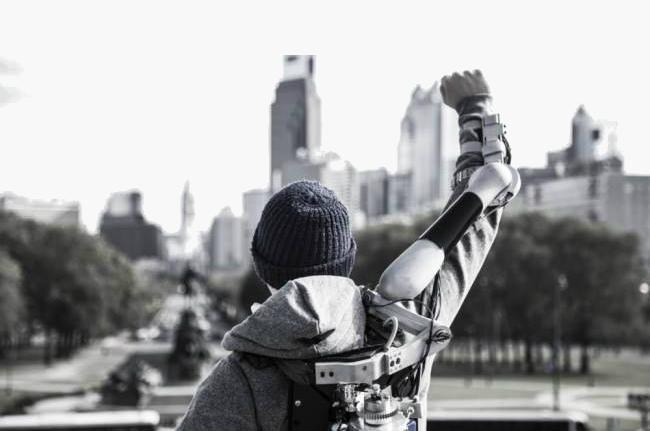
Four mechanical engineering students from the University of Pennsylvania have picked up the prestigious James Dyson Award and $45,000 in prize money for their superhuman robotic arm which allows a user to lift objects far heavier than they could otherwise manage.
The battery-powered Titan Arm could help those with upper-body injuries back to fitness, as well as provide extra strength for those with jobs involving heavy lifting.
“Titan Arm is obviously an ingenious design, but the team’s use of modern, rapid – and relatively inexpensive – manufacturing techniques makes the project even more compelling,” James Dyson told the BBC.
The inventor, known for his revolutionary redesign of the vacuum cleaner and fan, is referring to 3D printing techniques, which everyone in the competition used to develop their prototypes.

Elizabeth Beattie, a member of the winning team, described how she and her fellow students approached the project: “Existing exoskeletons are bulky, expensive, invasive, and tethered. Our challenge was to build an exoskeletal system that was inexpensive, streamlined, and wireless.”
The team’s Titan Arm exoskeleton, which incorporates four movable joints, is strapped onto the back and arm of the user, and uses a braking system to hold a static load. The arm’s motor is housed inside a backpack, which also includes a rigid back brace to help the user maintain good posture.
The design, which incorporates an elbow joint driven by a cable system, allows the user to lift around 20 kg (44 lb) more than what they can usually manage. Built-in sensors enable the arm to collect data on movement and lifting, which can then be sent automatically to medical staff for monitoring.
Costing only $1,900 to produce – a fraction of the cost of similar technology already on the market – the team certainly succeeded in making it inexpensive. This was achieved in part by using low-cost materials, with many of the arm’s structural components machined from inexpensive aluminum.
The plan is to make the robotic arm commercially available, offering it to hospitals and physical therapy centers, or businesses with workers employed to do heavy lifting.
Dyson told the BBC there’s never been a better time for engineers with groundbreaking ideas.
“Prototyping technology, previously reserved only for companies with big research and development budgets, is enabling young inventors to develop sophisticated concepts at university,” he said, adding. “They can revitalise industries on a small budget – it is a good time to be an inventor.”
The annual award, organized by the James Dyson Foundation, encourages young designers to tackle head on 21st century challenges such as sustainability, housing and an aging population.


